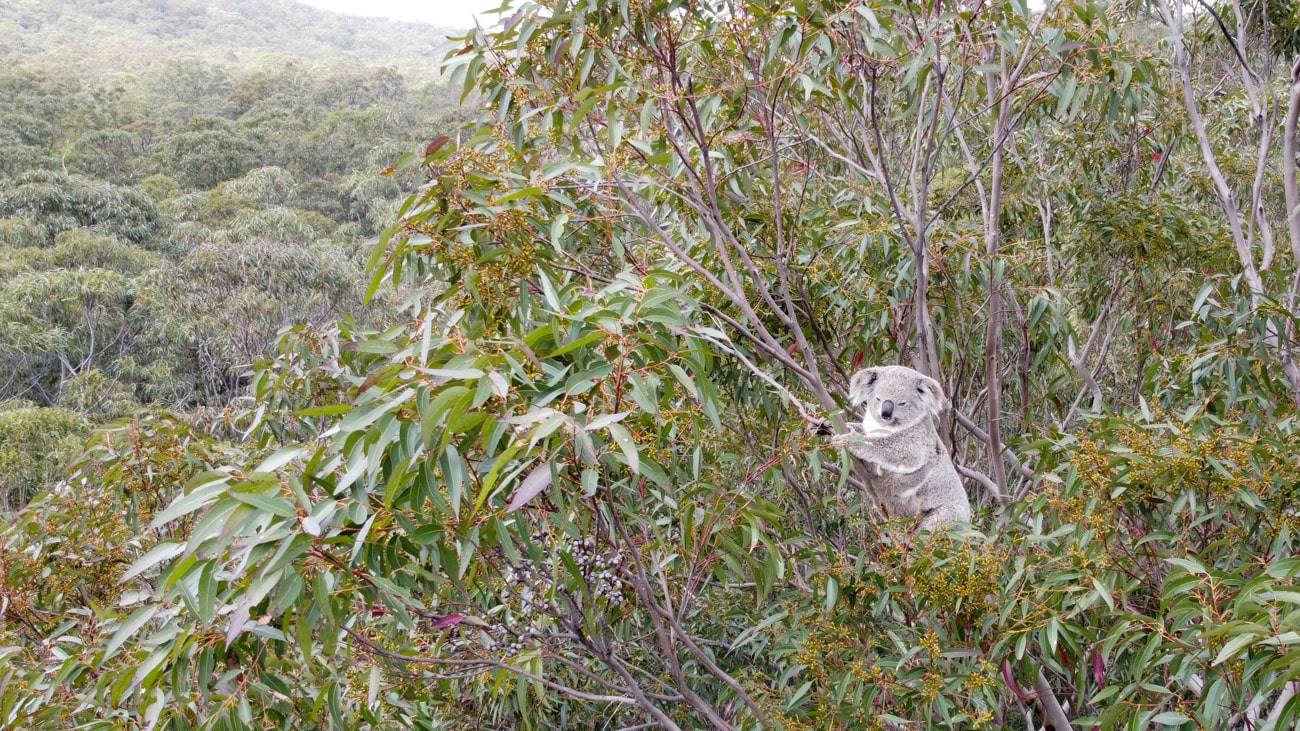A landmark survey has uncovered a hidden koala population living on the fringe of a major city, using thermal drone searches with spotlight verification and statistical modelling.
The study, funded by WWF-Australia and led by the University of Newcastle, is the largest and most accurate peer-reviewed koala survey to date, estimating a population of 4,357 koalas across 67,300 hectares of bushland spanning 208 sites in New South Wales.
University of Newcastle's Dr Ryan Witt said they were surprised to find Sugarloaf State Conservation Area, located inland of Newcastle, is home to a significant population of more than 290 koalas.
"The koala population at Sugarloaf seems to be a bit of a secret even though it's in close proximity to Newcastle," Dr Witt said.

Dr Witt said while there have been sporadic reports of koala sightings in Sugarloaf, there was no indication of a large or stable population until now.
"This population has flown under the radar—proving that koalas can survive, and even thrive, in peri-urban areas. These fringe habitats need protection and monitoring just as much as pristine reserves," Dr Witt said.
Local resident and Gamilaraay and Wiradjuri man, Daryn McKenny, grew up in the suburb of Killingworth which borders Sugarloaf.
"Sugarloaf was practically my backyard as a kid. But we never saw koalas there.
"It wasn't until about five years ago that I first spotted a koala at Sugarloaf," Mr McKenny said.
Since then, Mr McKenny has dedicated hundreds of hours to capturing the secret lives of Sugarloaf koalas on camera.
"Old records showed only around a dozen koalas documented, but our work over these past years was showing otherwise. To know there's close to 300 is just incredible though," Mr McKenny said.
Mr McKenny was invited to help the research team survey Sugarloaf and share his connection to the land.
"Daryn has a huge amount of knowledge of the land and the koalas at Sugarloaf. We were grateful to learn from him and share methods to find these cryptic animals," Dr Witt said.
Dr Ryan Witt and Daryn McKenny with a thermal drone at Sugarloaf State Conservation Area where more than 290 koalas are estimated to live
Finding a koala in less than two minutes
Using thermal drones with spotlights for night surveys, the team could find a koala in less than two minutes in areas which previously took hours of searching on-foot.
Shelby Ryan (pictured), a PhD candidate from the University of Newcastle and lead author of the study, said they look for a tiny yellow dot on-screen, which shows potential body heat in that area.
"We navigate the drone towards heat spots and switch on the spotlight to see in real-time whether it's a koala or another animal," Shelby said.
While the use of heat detecting drones to find wildlife is not new, combining this method with spotlights to help scientists visually distinguish animals was unique to this koala study.
"This method is much more reliable than using AI, which can mistake possums or other animals for koalas," Shelby said.
The team surveyed a sample area of about ten per cent of the seven national parks studied. Multiple surveys were taken across different nights to improve accuracy of the koala counts.
A robust statistical model was developed to predict koala numbers across the entire national park allowing data to be captured on a much larger scale.
"Our modelling reflects real-world environmental variation and not just a flat average. We considered factors like the terrain slope, tree coverage and height, and soil moisture to accurately represent koala abundance," Shelby said.
Of the seven national parks surveyed, Maria National Park had the greatest density of koalas with 521 koalas predicted in 3,350 hectares.
Dr Witt cautioned that density does not necessarily point to a thriving koala population though.
"We also surveyed two areas that were burnt in the 2019-20 Black Summer bushfires - Lake Innes and Khappinghat.
"We found the abundance of koalas at fire-affected sites was about two-thirds less than non-affected sites," Dr Witt said.

A new era for wildlife monitoring
The study sets a new bar for best practice and can be applied to monitor other species of tree-dwelling marsupials in Australia and mammals across the world.
"This kind of scale and precision is unparalleled in conservation, and data that we do not have across most species globally," Dr Ryan Witt said.
A thermal drone (left) reveals a yellow dot, signalling potential body heat. Pictured on the right, the thermal heat spot is confirmed to be a koala
While past koala monitoring efforts have relied on access to land, Dr Witt said their model can be used to predict koala numbers in surrounding areas of private land, or in areas with inaccessible terrain.
"We can now estimate how many animals are out there—and where—at scale," Dr Witt said.
The study is crucial to inform urgent conservation decisions across diverse landscapes.
"It gives a solid scientific baseline for seven of the state's koala populations. We've located koalas that wouldn't have been found on foot," Dr Witt said.
Darren Grover, WWF-Australia's Head of Regenerative Country, said WWF supported this research because it has a goal to double the number of koalas in eastern Australia by 2050.
"Achieving accurate abundance estimates is the holy grail of koala conservation. The work of Dr Witt and his team shows great promise towards that goal. Sugarloaf indicates when it comes to koalas there are still surprises. We need to know the location of significant populations, and to track their numbers, to better protect them."
This study was published in the journal, Biological Conservation. It was funded by WWF-Australia and led by the University of Newcastle in collaboration with researchers from Taronga Conservation Society Australia, UNSW, and FAUNA Research Alliance.






